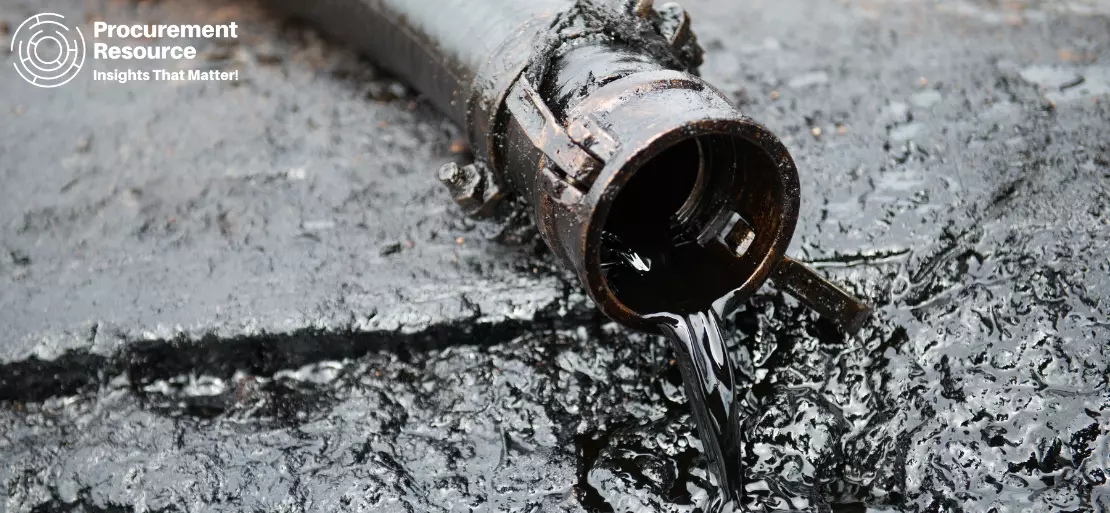Global Crude Oil Market Amidst COVID-19

Crude oil is one of the most essential commodities across the globe. It is the starting substance for petroleum products that serve as an essential raw material for several crucial goods. Crude oil is an indispensable facet for most of the world’s population who use it directly or indirectly as automotive fuel, as petroleum jelly in cosmetics, and in other every-day products.
Thus, even slight changes in the crude oil production against its demand will be reflected on the prices of these products. A number of variables affect the prices of crude oil, although supply and demand are the foremost factors informing the price fluctuations of the product.
Currently, the global economy has been virtually at a standstill due to the catastrophic COVID-19 pandemic, leading most countries to impose strict lockdown measures. This has drastically reduced the oil demand around the world due to industries working at limited capacity and stringent travel restrictions. Thus, with a significantly lower demand, the prices of crude oil are also witnessing a drop, reaching a record low in decades. The law of supply and demand states that if the demand goes up, the prices will also go up, whereas, if the quantity supplied is more than the demand, prices will go down.
World’s crude oil production is primarily controlled by some of the major players operating in the OPEC, including 14 Middle East nations, the United States, and Russia. Thus, any significant supply and production fluctuations among the countries reflect on the global crude oil prices.
The disagreement between the OPEC and Russia in March 2020 has given birth to one of the most ruthless price wars. The price war was the result of the fallout between OPEC and Russia, with Russia refusing to slash its production during the pandemic to stabilize the falling oil prices. In response to this, Saudi Arabia announced that it would produce 12.3 million barrels per day, even though the region had not produced over 10.5 million barrels per day till that point.
Russia, too announced an increase in its oil production. Thus, with this huge surge in supply alongside declining demand, the prices of oil went plunging down. From USD 65 per barrel in December 2019, it dropped to USD 35 a barrel by March second week this year. By April third week, it was hovering around USD 20 a barrel. It was suggested that oil prices would further dip as the chances of demand going up amidst the global lockdown is slim, with the added fact that the storage capacities are continuously running out.
Due to the outbreak of COVID-19 in almost every part around the world, the decline in global oil consumption over the month of April 2020 was estimated to be nearly seven times higher than the quarterly fall experienced by the world after the financial crisis of 2008. The global demand for oil came down to 29 million barrels a day from about 100 million a year ago.
But the real issue is that the production had not shrunk, leaving a massive surplus in the market without buyers. In order to maintain an equilibrium and close the gap between supply and demand, the major exporters, OPEC and Russia, finally decided to cut down the production on April 9th after witnessing the inevitable repercussions of such a brutal price war.
After the agreement of the major players to cut down the production, there have been signs of oil price picking up through mid-May with a slight increase in demand. By May 15th, West Texas Intermediate (WTI) oil was trading at USD 28.75, its highest since early April. Brent crude was trading at USD 32.50, the highest level since April 13th. Thus, while earlier in April, EIA had predicted that the Brent crude prices will average USD 32/barrel in the second half of the year, it has since revised its estimates.
According to the revised estimates released in July, Brent crude prices are now expected to averaged USD 41/b in the second half of the year and is expected to reach USD 53/b by the end of 2021. However, these forecast averages are contingent upon the global consumption of oil reaching 96 million b/d in the latter half of 2020 and the strict compliance of the production cuts announced by OPEC+, with both of these scenarios being plagued with uncertainties.
Currently, the demand for crude oil has been showing signs of improvement with the curb of the pandemic in some parts of the globe and the loosening of certain travel restrictions as people are starting to venture out and travel again. However, a second wave of the virus, if realized, could once again weigh on the oil demand. The steadily increasing prices are the early signs of improving demand, but they have been mainly improving because of the production cuts and general optimism among manufacturers.
There are still millions of crude oil barrels sitting in storage. Around ten years ago, oil was one of the first industries to emerge relatively unscathed from the economic crisis, with strong demand. It is now likely to be among the last to recover from the double blow of the pandemic’s destruction of demand and the oversupply of crude oil resulting from excessive production. Thus, the crude oil industry is expected to take a while to fully recover and return to pre-COVID-19 days.



